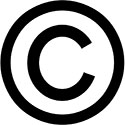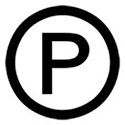Copyright Notices For https://www.aveeplayertemplate.com/
You see them everywhere from TV shows, to books, to movies, to song lyrics. Virtually any time you're dealing with something that someone else created, you're going to see a copyright notice.
If you want to protect your rights -- or make sure that you don't violate anyone else's rights -- you need to know exactly how copyright notices work.
First and foremost, what exactly is a copyright?
In the US, a copyright is a right that dates all the way back to the Constitution. Specifically, in Article I, Section 8, Clause 8, Congress is given the power to "promote the progress of science and useful arts, by securing for limited time to authors and inventors the exclusive right to their respective writings and discoveries."
In other words, the author of a work gets to exclusively sell his work for a limited time.
Copyright protection has been bolstered by the federal laws that have been created since. Now, copyright owners get to decide exactly how their works are used and distributed. Copyright laws are designed to protect the original author of intellectual property -- like art, poetry, songs, movies, and even computer software.
Contrary to popular belief, things like inventions, designs for a specific product, and company slogans do not fall under copyright protection. Instead, those things are protected by patents and trademarks.
You're not required to formally register your copyright whenever you create new intellectual property. Your rights as the owner automatically go into effect the moment your intellectual property is created, even if you haven't published it yet.
However, if you do want to formally register with the US Copyright Office you' ll have to fill out a quick form, pay a one-time fee, and provide a deposit of the work being registered. You'll get a certificate that lists several details, including:
- The title of the copyrighted work
- The author of the work
- The name and address of the official copyright owner
- The year the work was created
- Some status information about the work, such as if it contains information that previously registered, or if the work is unpublished
But what if you and a friend write a book together? Who gets the copyright protection?
Both of you.
The two of you are considered joint authors under US law, so you would both have full copyright protection for the entire book.
Or, if you and a group of people each write one chapter to create a big book, you'll each have copyright protection for the individual chapter that you wrote.
Fortunately, the US has copyright relations with dozens of different countries. As a result, you'll have full copyright protection in any of these countries no matter how many people may have collaborated on the work.
Why is Copyright Protection so important?
Ever since the days of the American Revolution, lawmakers have agreed that copyright protection is a good safety net of sorts for creators. Since they know their work isn't going to be stolen, people are more willing to create wonderfully artistic things and share them with the public.
Plus, with this protection intact, creators can be compensated for their work. Without a copyright, anyone could come along, copy the work, and profit from it.
What is a Copyright Notice?
It's a written statement that's placed on copies and phonorecords of a work. It informs the public that the copyright owner of this particular work is officially claiming ownership of it. Unlike other notices and disclaimers, this one is very easy to write because there isn't much to it.
In order to create a proper copyright notice, you need to have these 4 things:
A symbol
A copyright notice starts with a symbol, and there are a couple of different ones that you can use. The most common is the copyright symbol:

However, you can also use the full word "Copyright" or the abbreviation "Copr."
If your work is an audio recording, the copyright symbol has a P in it instead of a C. That's because these works are classified as phonograms:

Even though the symbol is different, a phonogram copyright comes with all of the same protection that a traditional copyright does.
A date
The year listed in a copyright notice can either be the year that the work was created (if it's still unpublished), or the year that the work was actually published. In either event, full copyright protection applies. Also, the year can be listed in numerical form (ex: "2017") or in Roman numeral form (ex: "MMXVII").
An owner
The name of the copyright owner can vary. It can be the owner's full name, an abbreviated version of the owner's name that people recognize, or an alternate name that's commonly known to the general public (like a pen name). It can also be a company, business or organization.
Here, the owner is aveeplayertemplate.com





No comments
Post a Comment